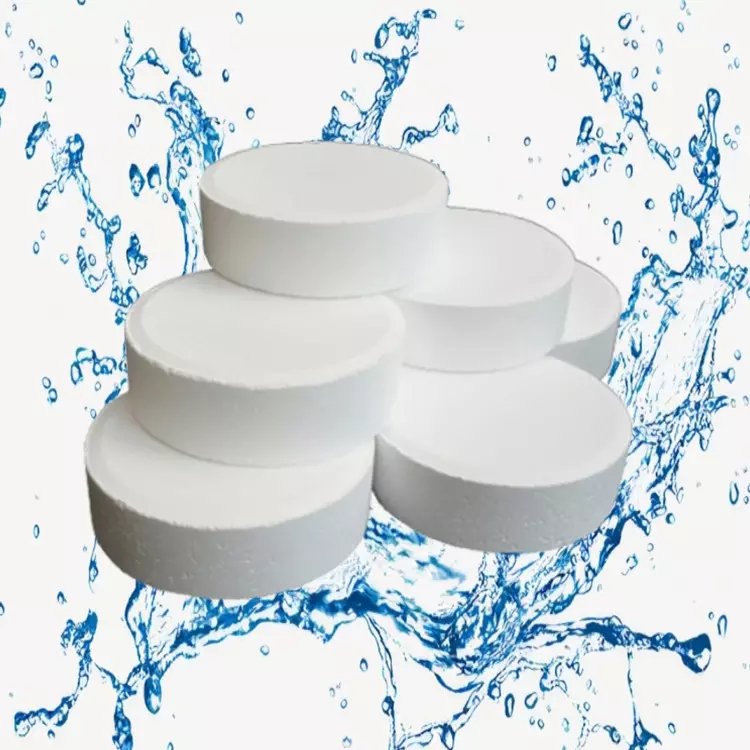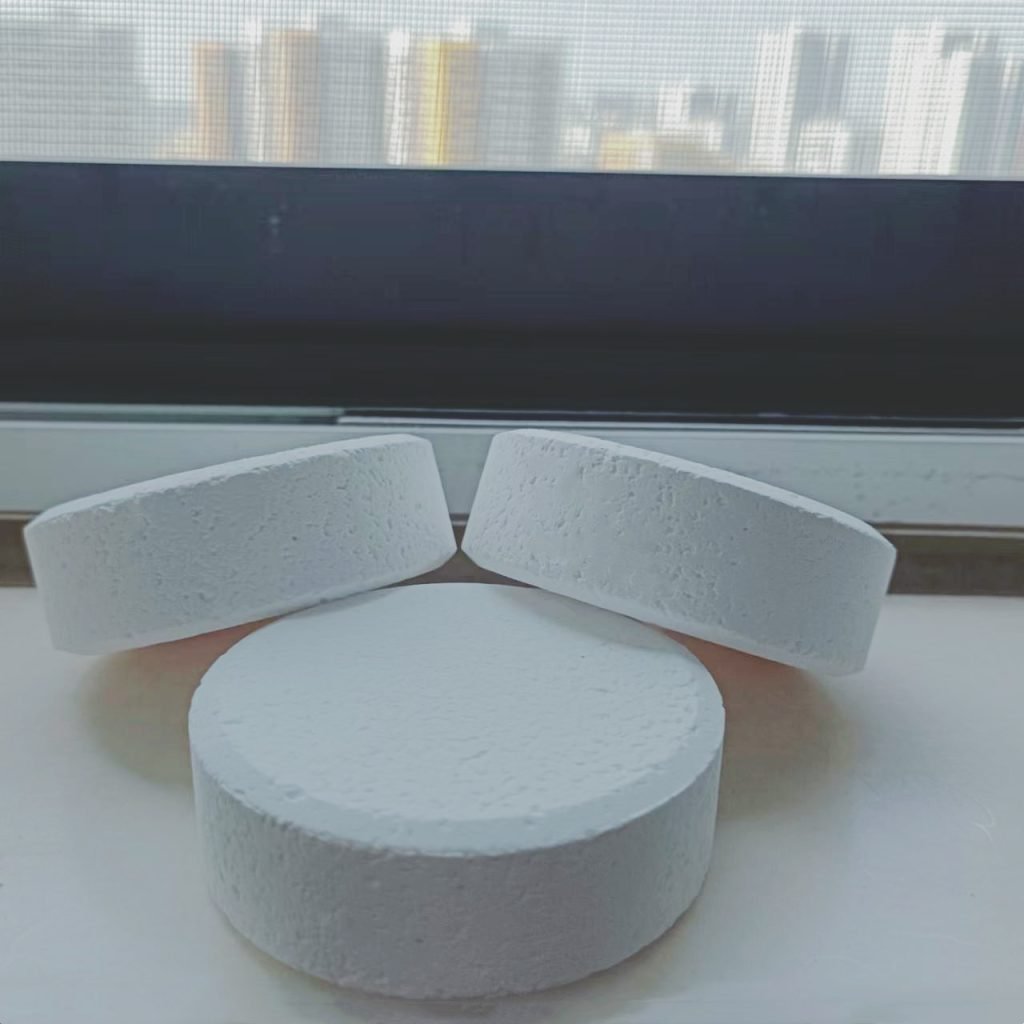Chlorine tablets are widely used for water treatment and sanitation purposes, making them a vital product for many industries and households. However, improper storage of these products can lead to safety hazards and environmental pollution. As a responsible chlorine tablet manufacturer, we believe it’s essential to share best practices on safely storing these products while protecting the environment. This article will guide you through the most effective storage methods and offer insights into maintaining safety while purchasing and using chlorine tablets.

I. Why Proper Storage of Chlorine Tablets Is Important
The importance of properly storing chlorine tablets cannot be overstated. When stored incorrectly, chlorine tablets can degrade, lose potency, and release harmful substances into the air or water. This can be dangerous not only for users but also for the environment. Safe storage helps maintain the quality of the tablets and ensures they perform effectively in water treatment.
Moreover, environmental contamination caused by chlorine products is a growing concern. Improperly stored chlorine tablets can leak chemicals into soil and water sources, causing long-term damage. By following the recommended storage practices, both manufacturers and consumers can reduce environmental risks while ensuring the tablets remain effective.
II. Best Practices for Safely Storing Chlorine Tablets
1. Store in a Cool, Dry, and Well-Ventilated Area
To keep your chlorine tablets effective and safe, store them in a location that is cool, dry, and well-ventilated. High temperatures can cause the tablets to break down and release toxic gases, while humidity can lead to premature dissolving. A well-ventilated space ensures that any accidental release of fumes is dispersed safely.
2. Use Proper Containers
Always store your chlorine tablets in airtight, chemical-resistant containers. These containers help prevent moisture from seeping in and protect the tablets from external contaminants. Additionally, proper containers ensure that no harmful substances are accidentally released into the environment. When purchasing from a trusted supplier offering discount chlorine tablets, ensure the packaging is durable and secure.
3. Keep Away from Incompatible Substances
Chlorine tablets are highly reactive and should never be stored near flammable materials, acids, or organic substances. Mixing chlorine tablets with incompatible chemicals can lead to hazardous reactions, including fires or toxic gas releases. Always follow the manufacturer’s guidelines for safe storage.
4. Label and Organize Storage
Clear labeling and organization of storage areas are crucial. Ensure each container is labeled with the type of chlorine tablet, its expiration date, and any necessary handling precautions. This reduces the risk of accidental misuse or mishandling, which could result in spills or contamination. If you’re buying cheap chlorine tablets from a factory, double-check the labels to ensure they meet safety standards.
5. Keep Away from Children and Pets
Chlorine tablets should be stored in a location that is inaccessible to children and pets. Accidental ingestion or contact with chlorine tablets can cause severe health issues. Always use a locked storage cabinet or a secure area to minimize the risk of exposure.
III. Environmental Impacts of Improper Storage
Improper storage of chlorine tablets poses significant risks to the environment. When chlorine products are exposed to moisture, they can release chemicals that pollute the air, water, and soil. This can disrupt ecosystems and harm wildlife. In severe cases, contaminated runoff from improperly stored chlorine tablets can reach water bodies, causing long-term environmental damage.
By storing chlorine tablets properly, you not only protect the environment but also reduce the likelihood of waste. Safe storage ensures that the tablets retain their effectiveness, minimizing the need for unnecessary replacement and disposal.
IV. Purchasing Chlorine Tablets Safely
When buying chlorine tablets, always prioritize quality and safety. Look for reputable manufacturers who follow strict safety and environmental guidelines. Many suppliers offer discount chlorine tablets, but it’s important to ensure that these products meet industry standards. Poorly manufactured chlorine tablets may be more prone to degradation, increasing the risk of environmental contamination.
Buying cheap chlorine tablets from a factory can be a cost-effective solution, but due diligence is essential. Verify that the factory adheres to proper storage and transportation protocols. A reliable supplier will provide high-quality products that are safely packaged and clearly labeled, reducing the risk of mishandling.
V. Additional Tips for Environmental Safety
1. Educate Consumers
As a chlorine tablet manufacturer, it’s crucial to educate your customers about safe handling and storage practices. Providing clear instructions on your product labels and website can help consumers make informed decisions.
2. Promote Recycling of Containers
Encourage customers to recycle the containers used for chlorine tablets. Proper disposal of packaging materials reduces environmental waste and promotes sustainability.
3. Develop Eco-Friendly Solutions
Invest in research and development to create eco-friendly chlorine tablets that minimize environmental impact. For example, using biodegradable materials for packaging can significantly reduce waste.
VI. Conclusion
Safe storage of chlorine tablets is essential for protecting both people and the environment. By following proper storage practices, such as keeping the tablets in cool, dry, and well-ventilated areas and using secure containers, you can ensure their effectiveness and safety. Additionally, choosing reliable suppliers for discount chlorine tablets and cheap chlorine tablets from a factory ensures you get high-quality products while minimizing risks.
As a responsible chlorine tablet manufacturer, we must lead by example. By promoting safe storage practices and prioritizing environmental sustainability, we can protect our customers and the planet while maintaining the integrity of our products. Let’s work together to make a difference.


 Instant
Quote
Instant
Quote Email
Us
Email
Us